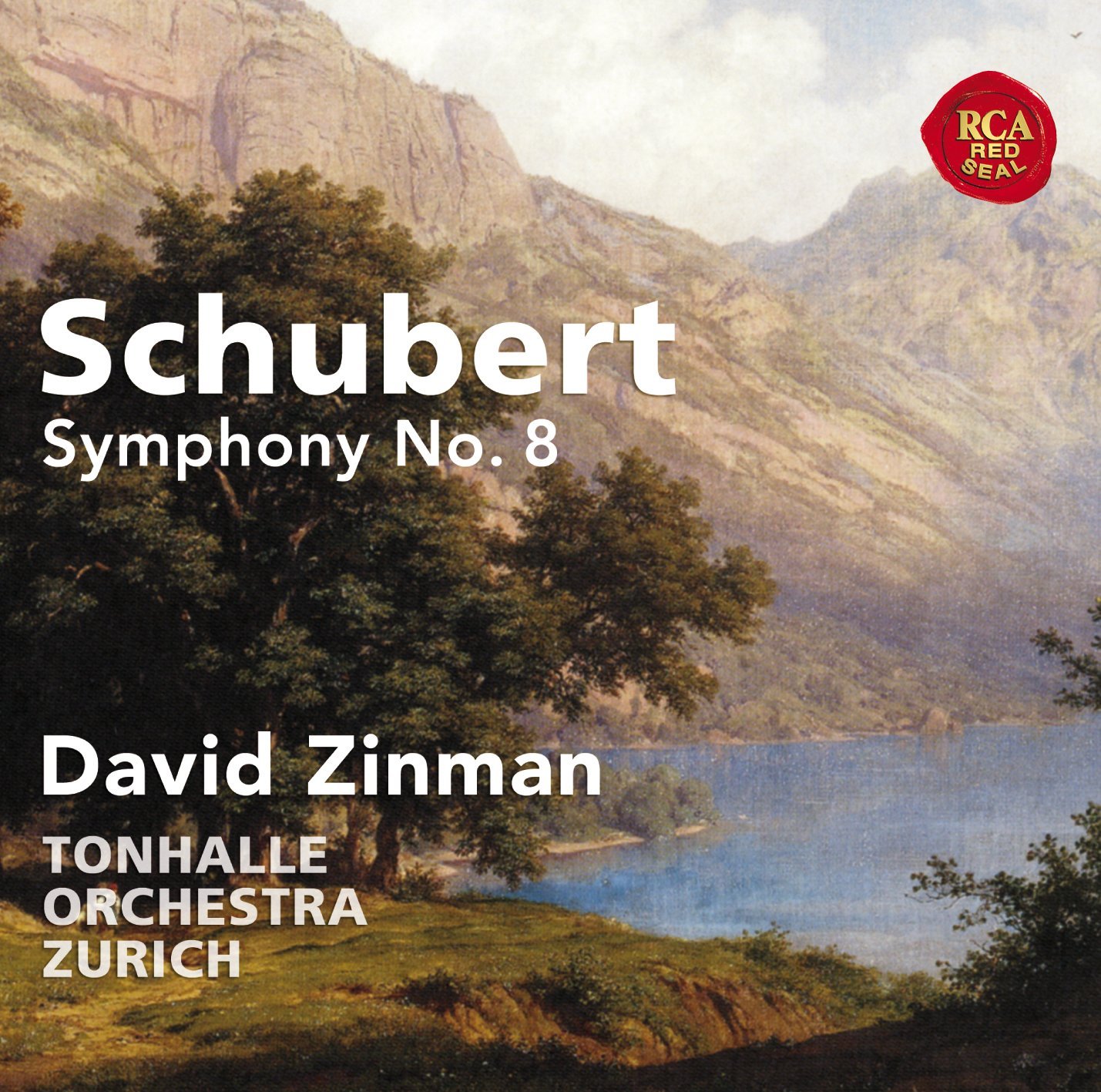Classical CDs Weekly: Akira Miyoshi, Schubert, Ashley Wass | reviews, news & interviews
Classical CDs Weekly: Akira Miyoshi, Schubert, Ashley Wass
Classical CDs Weekly: Akira Miyoshi, Schubert, Ashley Wass
Intriguing keyboard music from Japan, a light-footed behemoth of a symphony and a recital from a young British pianist.


Akira Miyoshi was born in Tokyo in 1933. Listen blind to the earliest piece on this disc and you’d think it could be an early work by the late Henri Dutilleux, and it’s no surprise to read that Miyoshi studied in Paris in the 1950s. Miyoshi’s Piano Sonata was completed in 1958, and it’s an arresting, attractive piece. It’s at its best when the piano writing is stripped bare, the harmonies reduced to their essence. Miyoshi’s faster writing can be dizzily exciting, but can feel as if it’s merely obeying our expectations of what a sonata should contain. Yet more interesting is Miyoshi’s 1973 Chaines, three linked pieces described by the composer as a set of 24 preludes – though not structured as you’d expect. Rhythmically freer, they’re punctuated by immaculately voiced bell sounds and oblique melodic gestures which can sound like probing questions. Hugh Collins Rice’s sleeve note highlights Miyoshi’s fascination with the physical act of breathing, and its impact on musical performance. And Chaines does feel very much alive – the occasional bursts of energy separated by music which shuffles, yawns and snoozes. In pianist Yukiko Kojima’s hands, every phrase speaks with calm authority, each sonorous chord immaculately balanced.
Written in 1980, En Vers starts softly and builds to a thunderous climax. The disc closes with the two movements of Pour le piano – Mouvement Circulaire et Croise, the second of which does arresting things with a repeated minor third. Music of rare potency and individuality; an hour spent with this disc will have you scurrying to YouTube in search of more Miyoshi. As usual, Odradek’s elegant presentation adds to the disc’s appeal.

David Zinman’s Beethoven symphony cycle, recorded with the Tonhalle Orchestra, created a stir in the 1990s – one of the first historically-informed modern instrument sets. His ongoing Schubert series has offered similar pleasures – razor-sharp articulation and plenty of rhythmic zip, coupled with a more refulgent orchestral sonority than you’d get with a period band. Zinman does however use natural horns and trumpets in this account of the massive Symphony No 8. You can hear the subtle colour change in the symphony’s opening horn call. The brass playing throughout is impressive – punchy, incisive but never overwhelming, and Schubert’s novel trombone-writing delights. In inexperienced hands, this symphony can feel very, very long indeed. Zinman does observe all Schubert’s repeats, but he also manages to sustain our interest. There aren’t any longueurs. Thunderous timpani in the second movement’s slow march might surprise the unwary, but they suit Zinman’s buoyant, upbeat approach. The music bubbles with dry wit, and you can hear how it must have influenced Mahler.
Zinman’s Scherzo is another treat. The central Trio whizzes along more quickly than usual, but doesn’t sound breathless. Schubert’s finale teeters on the edge of hysteria at times. Those emphatic low Cs a few minutes from the close sound a little like angry hobnailed boots, but Zinman’s positivity wins out. Stylish, entertaining playing, and richly recorded too.

It’s easy to forget how deeply strange Beethoven’s six Bagatelles are – music which can provoke both head scratching and giggles. Each one is a pithy explosion of ideas, continually veering off in unexpected directions. Ashley Wass has their full measure. This nicely sequenced disc functions as a sort of musical autobiography, and Wass’s lucid, witty notes explain the significance of each work. In the case of the Beethoven, he can’t resist pointing out a left-hand variant of Neil Hefti’s Batman theme which pops up slyly in the second Bagatelle. He’s right – why had I never noticed this before? The real surprise on the CD is the Piano Sonata by Samuel Barber, a wild, apocalyptic blast of dissonant energy, and Wass’s self-declared party piece. There’s so much power, so much energy in this work – the brief slow movement does little to calm the mood before a dizzying, complex fugue.
We get the wonderful single movement sonata by Berg. Wass’s technique is beyond reproach, but the effect is a little too bright and percussive – I prefer a softer-grained approach. Three Bach transcriptions are programmed along with Busoni’s grandiose, haunting Fantasia nach J. S. Bach and they’re exquisitely done. The two transcriptions by György Kurtág are remarkable. One of them, Gottes Zeit ist die allerbeste Zeit, closes the disc, aided by second pianist Ron Abramski. Its two sublime minutes may be among the most fruitful musical moments you spend this year.
Explore topics
Share this article
Add comment
The future of Arts Journalism
You can stop theartsdesk.com closing!
We urgently need financing to survive. Our fundraising drive has thus far raised £49,000 but we need to reach £100,000 or we will be forced to close. Please contribute here: https://gofund.me/c3f6033d
And if you can forward this information to anyone who might assist, we’d be grateful.

Subscribe to theartsdesk.com
Thank you for continuing to read our work on theartsdesk.com. For unlimited access to every article in its entirety, including our archive of more than 15,000 pieces, we're asking for £5 per month or £40 per year. We feel it's a very good deal, and hope you do too.
To take a subscription now simply click here.
And if you're looking for that extra gift for a friend or family member, why not treat them to a theartsdesk.com gift subscription?
more Classical music
 Jansen, LSO, Pappano, Barbican review - profound and bracing emotional workouts
Great soloist, conductor and orchestra take Britten and Shostakovich to the edge
Jansen, LSO, Pappano, Barbican review - profound and bracing emotional workouts
Great soloist, conductor and orchestra take Britten and Shostakovich to the edge
 Jakub Hrůša and Friends in Concert, Royal Opera review - fleshcreep in two uneven halves
Bartók kept short, and a sprawling Dvořák choral ballad done as well as it could be
Jakub Hrůša and Friends in Concert, Royal Opera review - fleshcreep in two uneven halves
Bartók kept short, and a sprawling Dvořák choral ballad done as well as it could be
 Hadelich, BBC Philharmonic, Storgårds, Bridgewater Hall, Manchester review - youth, fate and pain
Prokofiev in the hands of a fine violinist has surely never sounded better
Hadelich, BBC Philharmonic, Storgårds, Bridgewater Hall, Manchester review - youth, fate and pain
Prokofiev in the hands of a fine violinist has surely never sounded better
 Monteverdi Choir, ORR, Heras-Casado, St Martin-in-the-Fields review - flames of joy and sorrow
First-rate soloists, choir and orchestra unite in a blazing Mozart Requiem
Monteverdi Choir, ORR, Heras-Casado, St Martin-in-the-Fields review - flames of joy and sorrow
First-rate soloists, choir and orchestra unite in a blazing Mozart Requiem
 Cho, LSO, Pappano, Barbican review - finely-focused stormy weather
Chameleonic Seong-Jin Cho is a match for the fine-tuning of the LSO’s Chief Conductor
Cho, LSO, Pappano, Barbican review - finely-focused stormy weather
Chameleonic Seong-Jin Cho is a match for the fine-tuning of the LSO’s Chief Conductor
 Classical CDs: Shrouds, silhouettes and superstition
Cello concertos, choral collections and a stunning tribute to a contemporary giant
Classical CDs: Shrouds, silhouettes and superstition
Cello concertos, choral collections and a stunning tribute to a contemporary giant
 Appl, Levickis, Wigmore Hall review - fun to the fore in cabaret and show songs
A relaxed evening of light-hearted fare, with the accordion offering unusual colours
Appl, Levickis, Wigmore Hall review - fun to the fore in cabaret and show songs
A relaxed evening of light-hearted fare, with the accordion offering unusual colours
 Lammermuir Festival 2025, Part 2 review - from the soaringly sublime to the zoologically ridiculous
Bigger than ever, and the quality remains astonishingly high
Lammermuir Festival 2025, Part 2 review - from the soaringly sublime to the zoologically ridiculous
Bigger than ever, and the quality remains astonishingly high
 BBC Proms: Ehnes, Sinfonia of London, Wilson review - aspects of love
Sensuous Ravel, and bittersweet Bernstein, on an amorous evening
BBC Proms: Ehnes, Sinfonia of London, Wilson review - aspects of love
Sensuous Ravel, and bittersweet Bernstein, on an amorous evening
 Presteigne Festival 2025 review - new music is centre stage in the Welsh Marches
Music by 30 living composers, with Eleanor Alberga topping the bill
Presteigne Festival 2025 review - new music is centre stage in the Welsh Marches
Music by 30 living composers, with Eleanor Alberga topping the bill
 Lammermuir Festival 2025 review - music with soul from the heart of East Lothian
Baroque splendour, and chamber-ensemble drama, amid history-haunted lands
Lammermuir Festival 2025 review - music with soul from the heart of East Lothian
Baroque splendour, and chamber-ensemble drama, amid history-haunted lands
 BBC Proms: Steinbacher, RPO, Petrenko / Sternath, BBCSO, Oramo review - double-bill mixed bag
Young pianist shines in Grieg but Bliss’s portentous cantata disappoints
BBC Proms: Steinbacher, RPO, Petrenko / Sternath, BBCSO, Oramo review - double-bill mixed bag
Young pianist shines in Grieg but Bliss’s portentous cantata disappoints

Comments
What was this Schubert
What was this Schubert symphony, I wondered - another completed version of the Unfinished, the one I've always known as No. 8? But reading on, I found you were referring to the Great C Major (likewise 9 in my books). Have I missed some slice of scholarly re-allocating? At best, the cover is misleading. Does the booklet clarify?
I'm not a Schubert scholar,
Thanks, Graham. The
Thanks, Graham. The recording's provenance from the German (or Schwyzerdütsch speaking) world might account for the unexplained titling on the sleeve. 'Great C major' as a subtitle might have prevented confusion. And in which case, what do we number the 'Unfinished'?